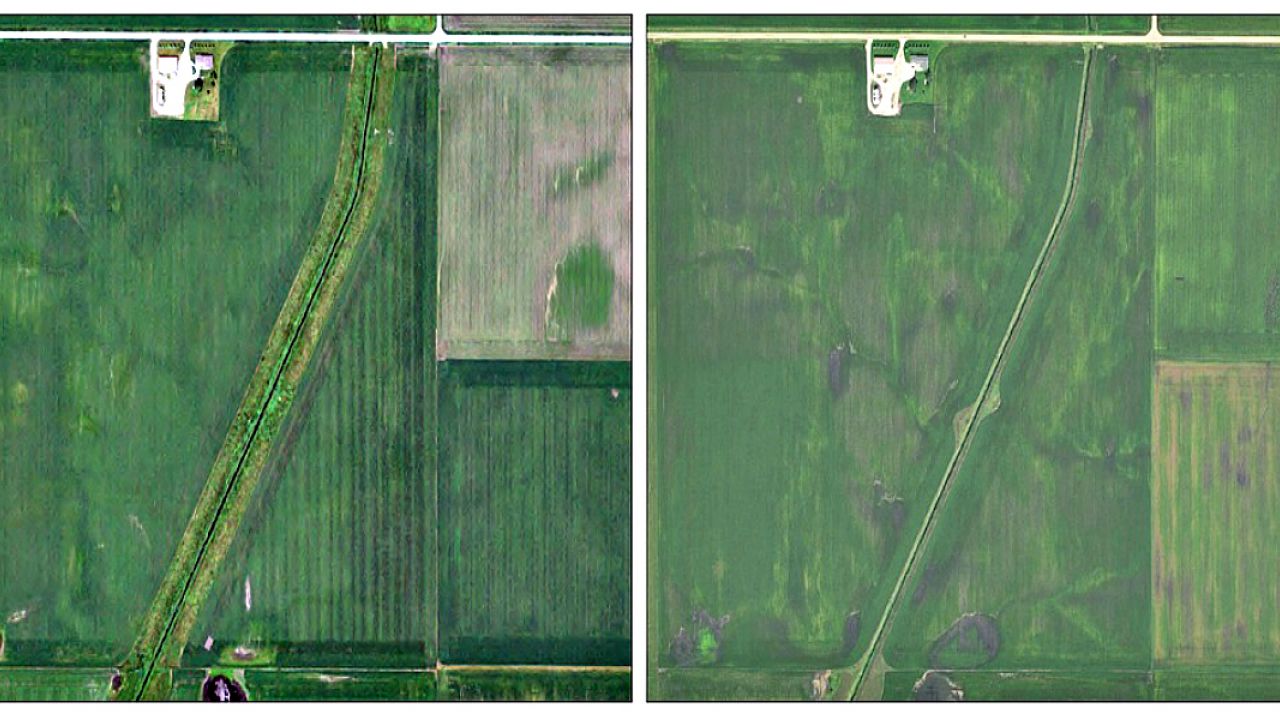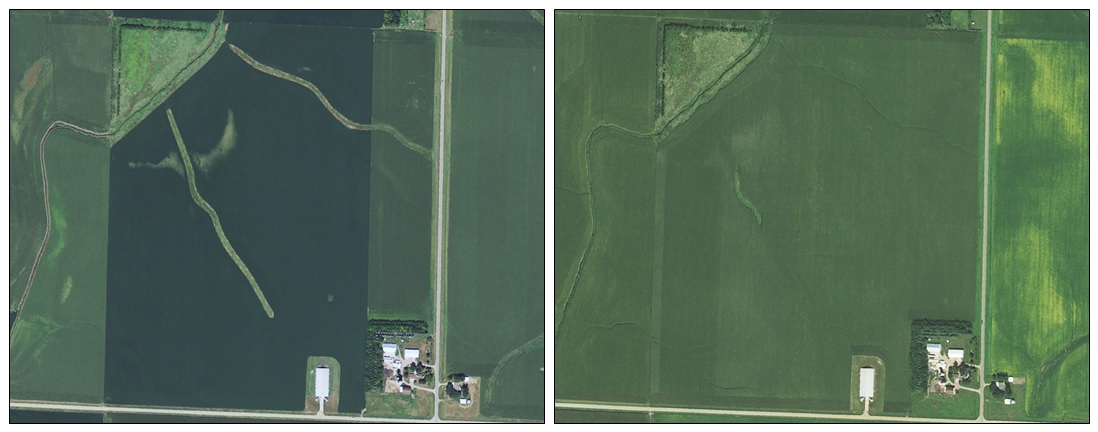
A recent study by scientists at the U.S. Geological Survey has concluded that the water quality in 22 rivers over the past 65 years is terrible and not getting better, judging by the concentration of nitrates in the water.
The USGS measured nitrate, a component of fertilizer that stimulates algae growth that sucks oxygen out of the water and suffocates aquatic life. Its report, published last June in the online version of the Journal of the American Water Resources Association, said that increases in nitrate pollution were worst in the Midwest. Worse, it said that despite voluntary efforts to curb farm runoff in the region, “there was no evidence for widespread improvement in riverine [nitrate] pollution.”
Every year, nitrate, a key ingredient in agricultural fertilizers, flows off the millions of acres of row crops that blanket the Midwest. Water loaded with fertilizer sets off a cascade of harms that threaten human health. Infants who drink water with high nitrate levels can develop an acute, life-threatening blood disorder called blue baby syndrome. High nitrate levels in water can also affect thyroid function in adults and increase the risk of thyroid cancer.
A 2012 report by EWG, entitled Murky Waters, asserted that water quality was rated "poor" or "very poor" in 60 percent of Iowa stream segments monitored by state regulators.
The onslaught of farm-generated toxic pollution led the Des Moines Water Works to sue three upriver counties to get them to clean up polluted runoff from farm fields because it was flowing into rivers that supply drinking water to half a million people in Des Moines. The case is scheduled to be heard by a federal court in August of next year.
Many rural water systems with limited resources struggle to pay for filtering out nitrate pollution, potentially leaving entire communities at risk. Harvest Public Media reported last month that 161 Nebraska communities were forced to conduct additional tests on their drinking water last year because nitrate levels were near the maximum nitrate pollution level considered safe to drink. Some communities will have to spend millions to install new treatment systems or drill new wells. Worse yet, tests of water from some private wells used by rural residents had nitrate levels four to five times the legal limit, requiring some to reassess their drinking water.
The constant refrain from agricultural interests is that residents in areas afflicted by nitrate pollution need to be patient. They claim that eventually, landowners will do a better job caring for their land, so water will get cleaner.
We doubt it. Taxpayers have already spent billions of dollars to encourage owners of agricultural land to curb nitrate pollution. This so-called “voluntary approach” is clearly not working.
Simple practices like growing buffers -- strips of grass between fields and waterways -- would make a big difference because they slow down and filter water flowing off farm fields. But if landowners can voluntarily install a water quality practice they can also voluntarily take it away. That is exactly what we are finding is happening (SEE PHOTOS BELOW).
The new USGS report is more proof that relying solely on a voluntary approach to cleaning farm pollution is just not working. What this country needs is a set of standards—simple practices that all landowners should be required to meet to protect waterways and people’s health.
Taxpayers should help out landowners who can show that meeting the standards will cause them serious financial hardship. But most landowners should meet these standards with their own dime. Earlier this year, a report by EWG called Low Hanging Fruit showed that requiring landowners to keep 50 feet of grass filters between crop fields and waterways would have little effect on farmers’ bottom lines but would accomplish a lot toward cleaning up ground water.
With basic farming standards in place, taxpayers’ money could go to those landowners willing do more to keep ground water clean.

Source: USDA National Agricultural Imagery Program (2011-2014)
The 2011 aerial photo on the left shows a riparian buffer shielding both sides of a drainage ditch from nutrient runoff while providing animal habitat. The shot on the right shows the same area in 2014 with most of the protective vegetation ripped out and planted to row crops.

Source: USDA National Agricultural Imagery Program (2011-2014)
The aerial photo on the left displays two grassed waterways, which are designed to slow down and filter nutrient runoff during heavy rains. The image on the right shows the same space in 2014, with almost all of the engineered grass plantings turned to cropland.


